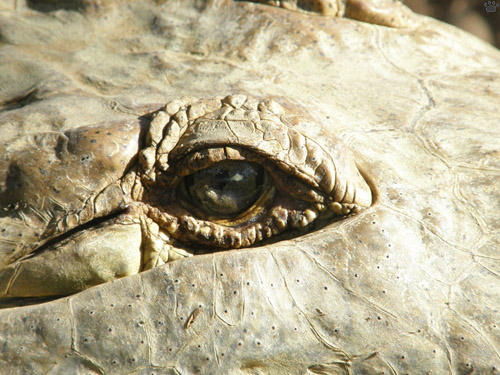
Orinoco crocodile (Crocodylus intermedius), Hato Masaguaral, Venezuela.
Crocodiles part 14: Orinoco Crocodile
Orinoco crocodile differs in size, head shape, and armor pattern from the American crocodile (C. acutus), but genetically the two species are very close. It is possible that the Orinoco crocodile is just a freshwater subspecies of the American crocodile. It is the largest predator in the Americas: males can reach 6 m/20' in length, although such giants are almost never seen nowadays.

Even the largest Orinoco crocodile can easily hide in just 60 cm/2' of water. Hato Masaguaral, Venezuela. |
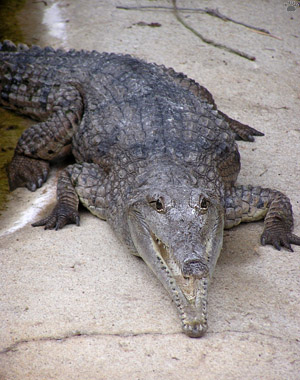
Orinoco crocodile, St. Augustine Alligator Farm Zoo Park, Florida. |
It has once inhabited much of the Orinoco Basin, but not the upper Orinoco, probably because of the rapids blocking the way. In the Amazon, it is apparently replaced by the black caiman (Melanosu-chus niger). |
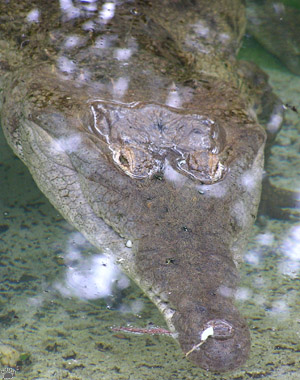
Orinoco crocodile, SAAFZP, Florida. |
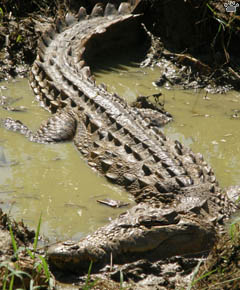
Male about to roar, Hato Masaguaral.
|
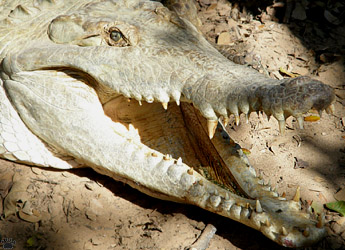
Female defending her nest, Hato Masaguaral. |

Male floating in inflated position, Rio Capanaparo, Venezuela. |
Orinoco crocodile is one of the world's rarest crocodilians. Only a few hundred still survive in the llanos of Venezuela, and a few individuals in eastern Colombia. A few captive breeding programs are underway. |
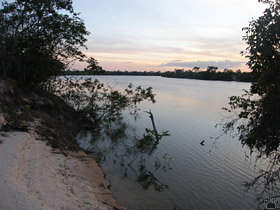
Orinoco crocodile habitat, Rio Capanaparo, Venezuela. |
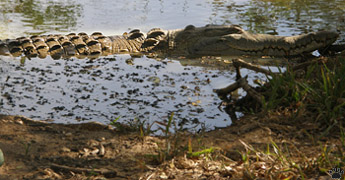 |
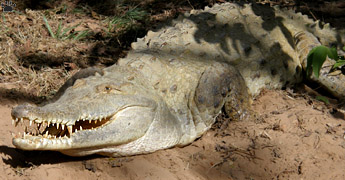 |
| Male (left) and female Orinoco crocodiles guarding a nest. Hato Masaguaral. |
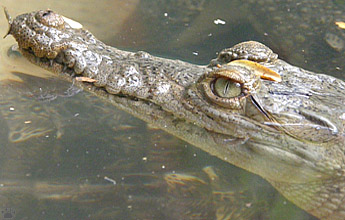
Juvenile Orinoco crocodile, Hato Masaguaral. Females normally
protect their broods for one to three years. |
Breeding biology of the Orinoco crocodile is similar to that of the American crocodile. Both male and female would fiercely defend their nest burrow. Juveniles eat mostly fish, but adults would also hunt birds and mammals. |
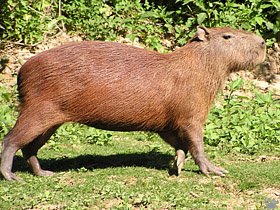
Capybara (Hydrochoerus hydrochaeris) is a common prey
species. Rio Capanaparo.. |
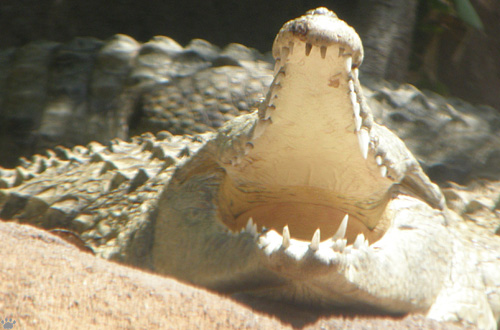
Orinoco crocodile, SAAFZP, Florida. |
Part 15: Morelet's crocodile
Back to Part 13
Home
|